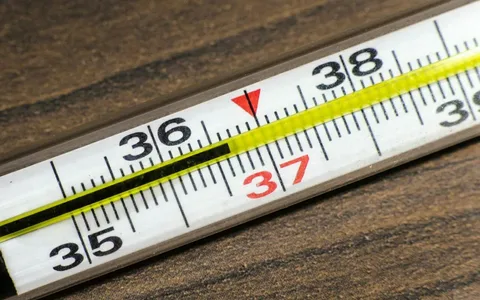Introduction
When it comes to body temperature, understanding the difference between Celsius and Fahrenheit is crucial. Many people wonder, “What is 36.6°C in Fahrenheit?” and whether this temperature indicates a fever.
In this blog, we’ll explore the conversion of 36.6°C to °F, discuss its implications for adults and babies, and answer common questions about body temperature.
What is 36.6°C in Fahrenheit?
To convert 36.6°C to Fahrenheit, you can use the formula: °F = (°C × 9/5) + 32 Applying this, 36.6°C equals **97.88°F**. This temperature is considered normal for most individuals. It falls within the typical range of 97°F to 99°F (36.1°C to 37.2°C), which is generally accepted as a healthy body temperature.
Is 36.6°C a Fever for Adults?
For adults, a body temperature of 36.6°C (97.88°F) is not a fever. In fact, it’s slightly below the average normal temperature of 37°C (98.6°F). A fever in adults is typically defined as a temperature above 38°C (100.4°F). Therefore, 36.6°C is a safe and healthy reading for most adults.
6.6°C to Fahrenheit for Babies: Is It Normal?
When it comes to babies, parents often worry about their little one’s temperature. A reading of 36.6°C (97.88°F) is generally normal for infants. However, babies have more sensitive thermoregulation systems, so slight fluctuations can occur. If your baby’s temperature drops below 36°C (96.8°F) or rises above 38°C (100.4°F), consult a pediatrician.
Is 36.6°C a Fever?
No, 36.6°C is not a fever. It is within the normal range for both adults and babies. A fever is typically diagnosed when body temperature exceeds 38°C (100.4°F). If you or your child experience symptoms like chills, sweating, or fatigue alongside a higher temperature, it may indicate an infection or illness.
Why Monitoring Body Temperature Matters
Keeping track of body temperature helps identify potential health issues early. Whether you’re checking 36.6°C to Fahrenheit for yourself or your baby, understanding what’s normal can provide peace of mind. Always use a reliable thermometer and follow proper guidelines for accurate readings.
When to Seek Medical Attention
While 36.6°C is not a fever, consistently low or high temperatures may signal underlying problems. For adults, a persistent temperature below 36°C (96.8°F) or above 39°C (102.2°F) warrants medical attention. For babies, any temperature outside the 36°C to 38°C range should be discussed with a doctor.
FAQs
1. Is 36.6°C a fever for adults?
No, 36.6°C (97.88°F) is not a fever. It is within the normal body temperature range for adults.
2. What is 36.6°C in Fahrenheit for a baby?
36.6°C is 97.88°F, which is a normal temperature for babies.
3. Can 36.6°C indicate a fever?
No, 36.6°C is not a fever. A fever is typically defined as a temperature above 38°C (100.4°F).
4. Is 36.6°C too low for a baby?
No, 36.6°C is within the normal range for babies. However, temperatures below 36°C (96.8°F) may require medical attention.
5. How do I convert 36.6°C to Fahrenheit?
Use the formula °F = (°C × 9/5) + 32. For 36.6°C, the result is 97.88°F.


